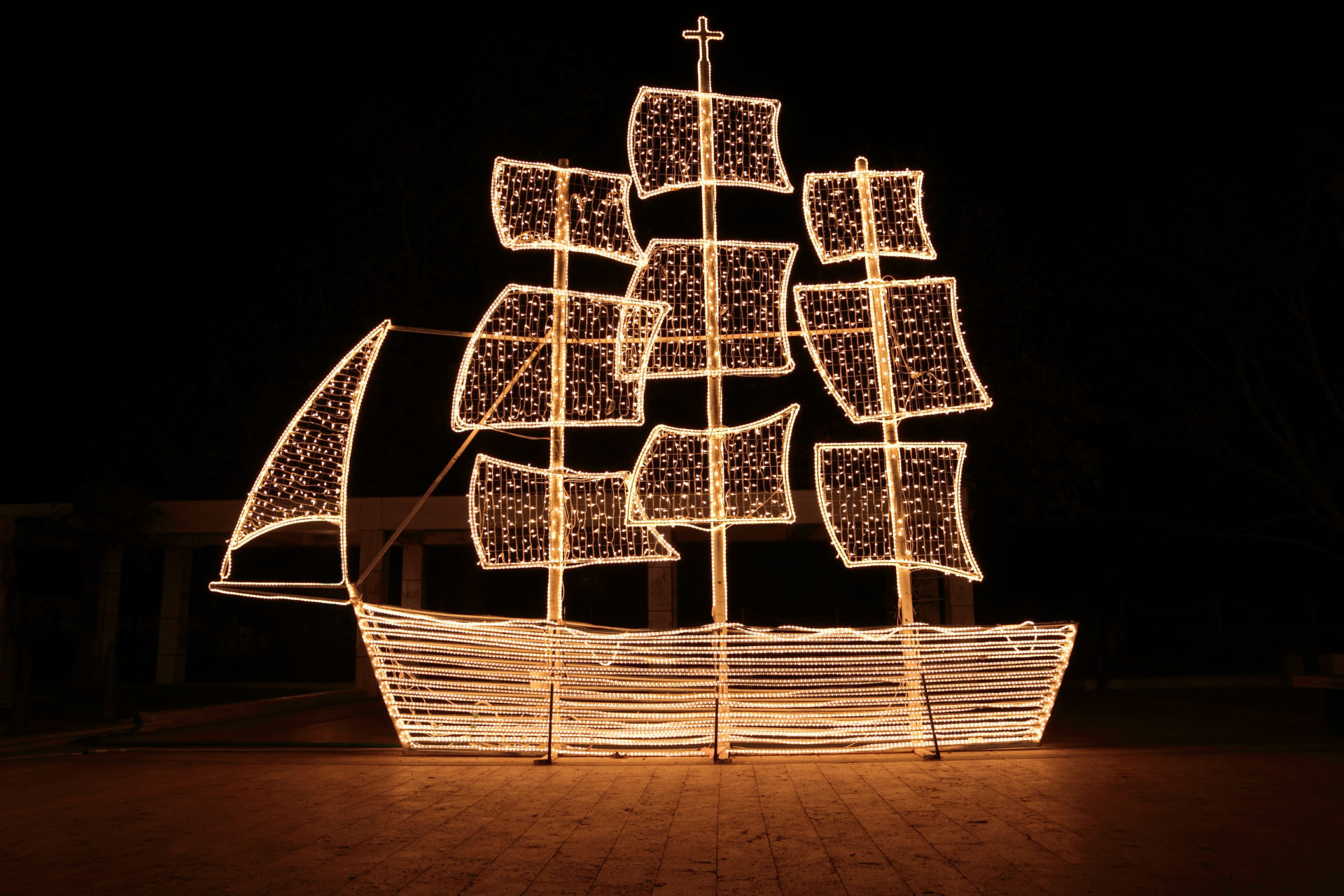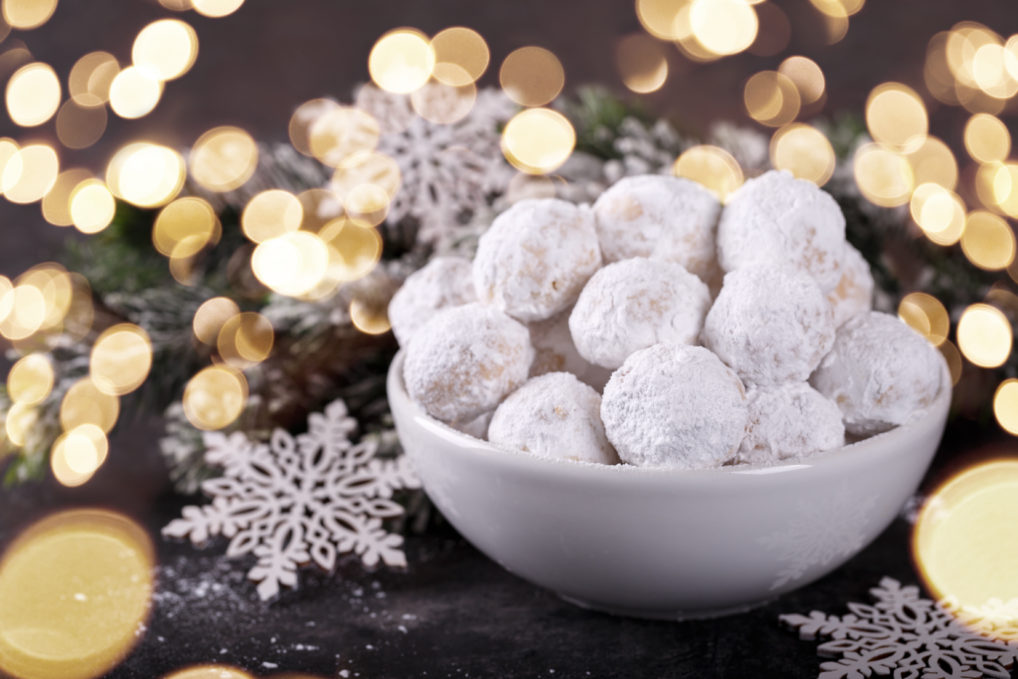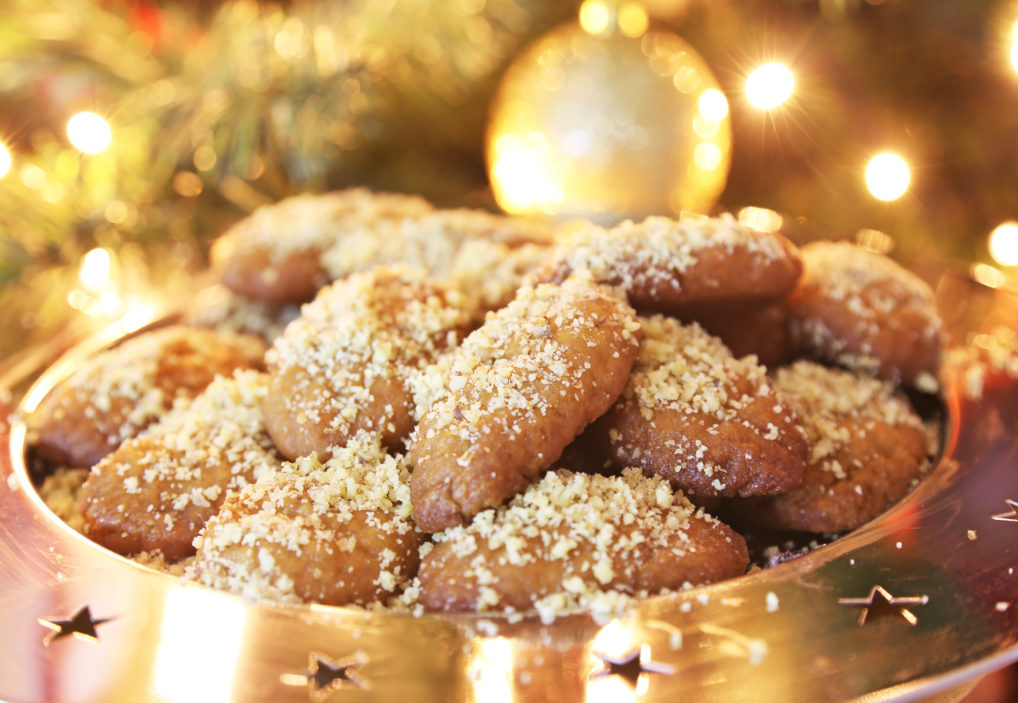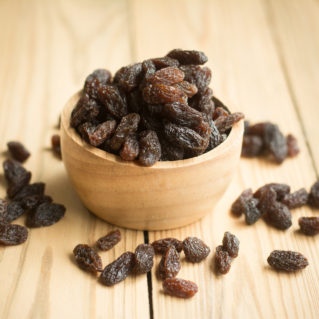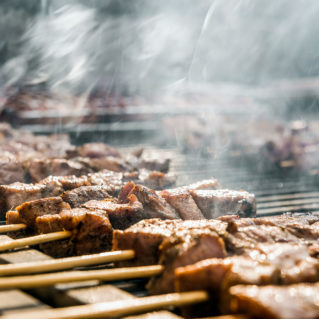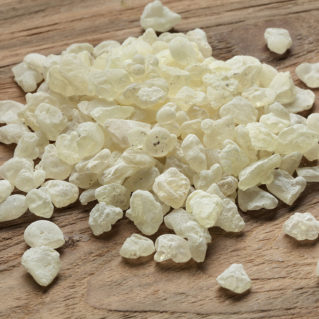Greece has many customs and traditions related to Christmas and New Year. There are many that are common throughout the territory, but there are also many that are local in nature and not very well known. Although the celebration of Christmas has been greatly influenced in terms of decoration and gastronomy, mainly by the West countries, the Greeks remain quite faithful to certain traditions, such as the kalanta (carols), the cutting of the “vassilopita” the 1st January, the smashing of the pomegranate for the New Year, the “podariko”. As a holiday, Christmas remains quite a family affair.
To Karavaki, the decoration of the boat
Traditionally, in the coastal areas of Greece, they decorated the Christmas boat as the Greeks were purely a naval people and thus symbolized the new bow that their life takes with the birth of Christ. When the children sang the carols, they took the boat with them, which most of the time they made themselves, in order to put the sweets that they gave to them for the carol singing. The custom of the Christmas tree came to Greece with King Otto, who was the king of Greece from 1832 to 1862. However, the Christmas tree was adopted much later by the Greeks, as the boat was associated with the separation of sailors from their families, as well as the grief and melancholy that accompanied him.
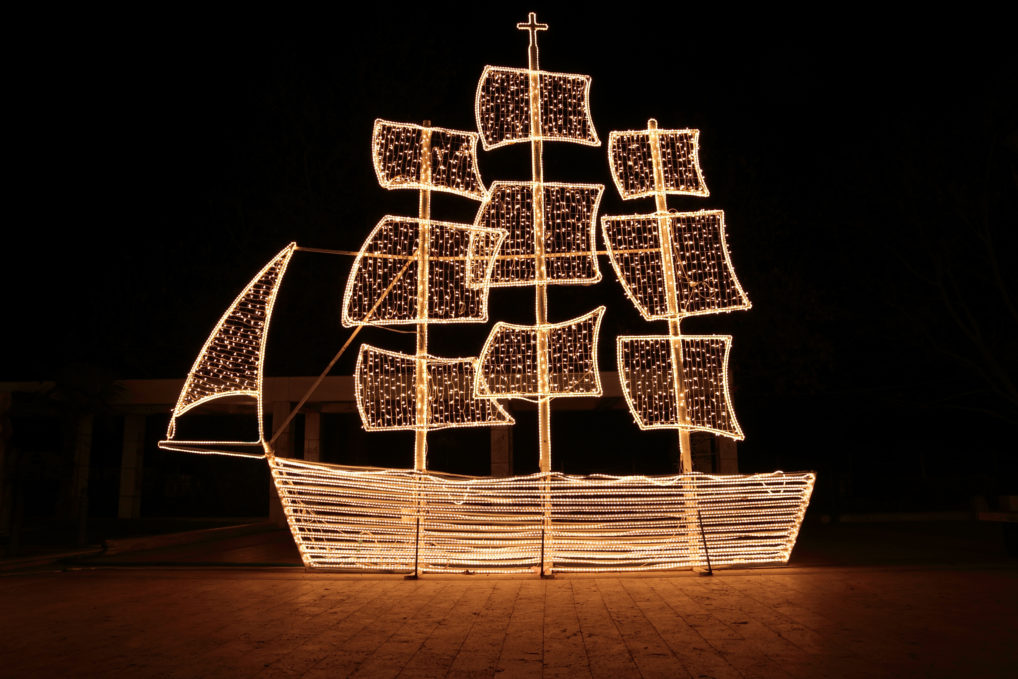
The holidays sweet treats
The desserts that are prepared in Greece and have been associated with the holiday season are melomakarona, kourabiedes, diples and the vassilopita for the New Year (read our articles about the traditional holiday sweets and the tradition of the vassilopita). But there are sweets such as “aetoudakia”, either in the form of cookies or in the form of vassilopita, isli and foinikia for example that are associated with the Greeks who originate from the coasts of Minor Asia and Constantinople. In other parts of Greece, traditional Christmas sweets are xerotigana, baklava and lalangia, among others.
Christopsomo
Christopsomo or the “bread of Christ” as its name implies, is a loaf of bread with anise that was prepared by the housewives of each house on Christmas Eve. On Christmas bread, the women engraved the sign of the cross, while they made various other ornaments with dough. On Christmas day, the householder cut the Christmas bread and distributed it to his family members. In some parts of Greece, they put a coin in Christmas bread, as they do in vassilopita.
Pomegranate smashing
With the change and the coming of the new year, just before Agios Vassilis (Santa Claus) passes for the children, one of the first things that happens in the houses is the smashing of the pomegranate. The pomegranate symbolizes euphoria and fertility and the reason we break it is to bring luck to the house!
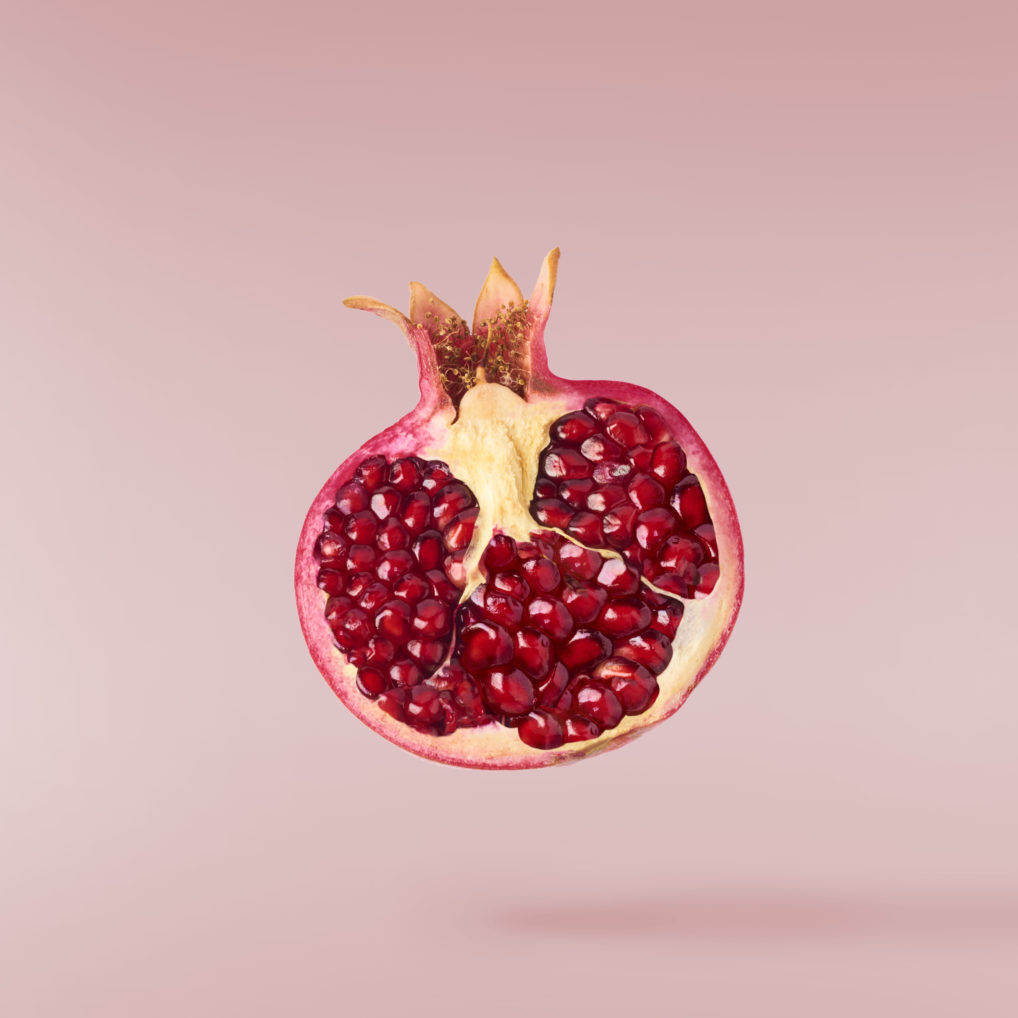
Kalanta (carols)
The carols are folk songs of praise that have Byzantine roots and are sung every year on the eve of major religious holidays, such as Christmas, New Year and Epiphany. The carols are usually sung by children, who either alone or with friends and go to homes and shops and sing these “wishes”. Their tip is money in the modern period, while in the past they were products such as sweets and nuts. They usually accompany the song with the traditional triangle. In some cases they can use other musical instruments such as accordion, flute and lute. The carols depending on the region have different variations. For example, there are at least thirty variations of Christmas carols.
Kalikantzaroi (goblins)
According to Greek tradition, Kalikantzaroi (goblins) are evil spirits, living in the underworld and their world is connected to ours through a tree. The evil spirits called Kalikantzaroi live under the tree, trying to find an escape for our world, which they manage to do during the Twelve Days of Christmas (from December 25 to January 6). According to legend, Kalikantzaroi can ascend to our world at that time and cause problems because Christ has not yet been baptized and therefore can not protect people from evil. The faithfuls at that time keep them away from their homes by burning wood and incense.
Traditional Christmas meal
Traditionally at the Christmas meal in Greece there are handmade pies with stuffing, such as seasonal vegetables (spinach, leeks, onions, greens), cheese and minced meat. Another custom is the existence of lahanontolmades (cabbage stuffing with minced meat) on the table, which according to folklorists comes from Byzantium, where the wrapped cabbage leaves symbolize the nappies of Christ. At the traditional Christmas table we find dishes with pork, such as pork with celery, grilled in the fireplace or in the oven, sausages, tigania or pichti (simmered meat with plenty of lemon). There was a tradition that every family raised a pig from May with the aim of slaughtering it on Christmas Eve in many parts of Greece, for example in Crete. Of course all the dishes are accompanied by good local wine!
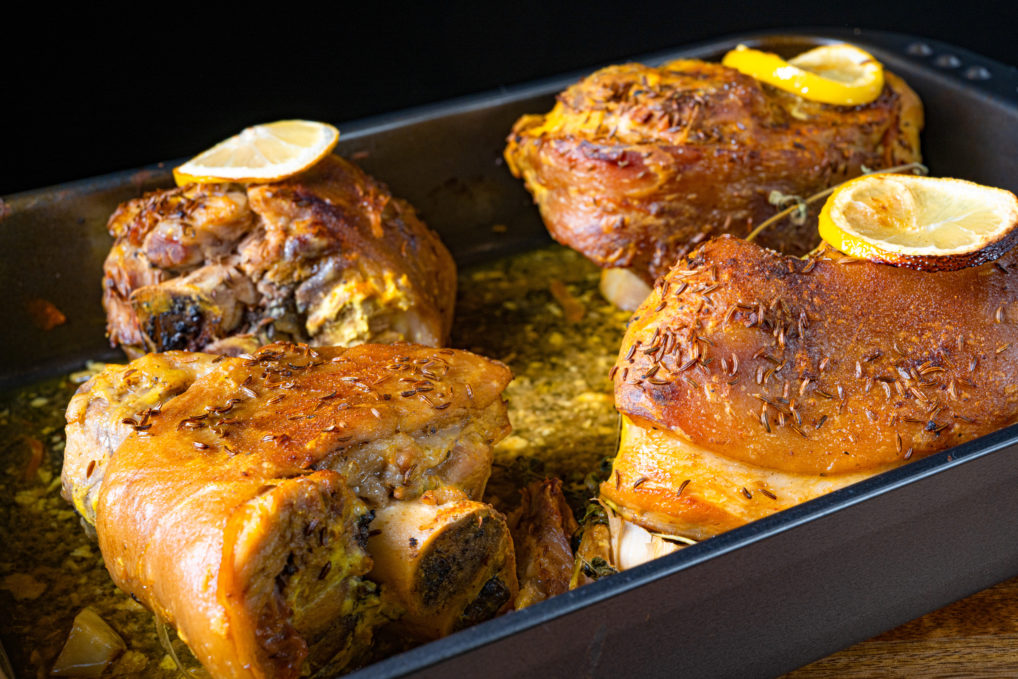
Podariko
At the stroke of New Year’s midnight someone considered lucky, or a child, because the children are innocents, is sent outside and ordered to re-enter in the house, right foot first, to bring good luck for the following year. That it the custom of podariko (first footing).
Of course the customs do not stop here, there are many others such as momogeroi in Thessaly, Thrace and Macedonia, the custom of perfume in the Ionian Islands, Christoxylo (the wood of Christ) associated with the kalikantzaroi, the feeding of the well, the big onion, the lighting of the leaves of laurel.
Happy Holidays, Merry Christmas and Chronia Polla !

